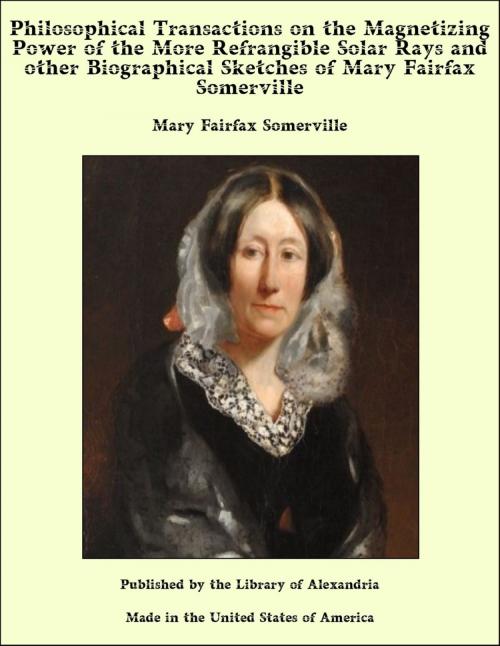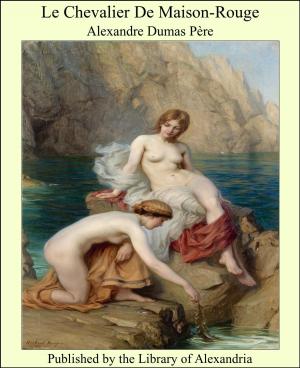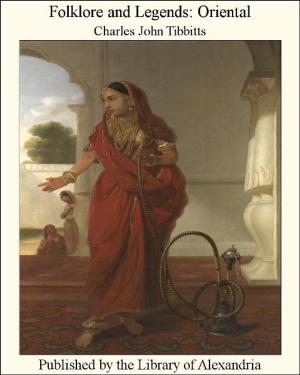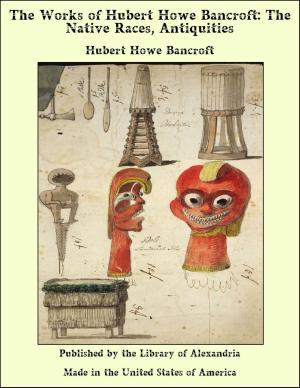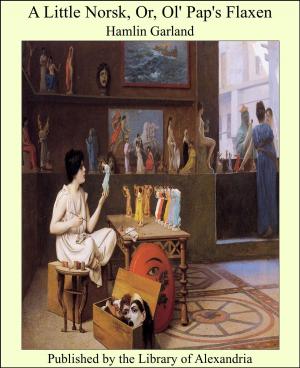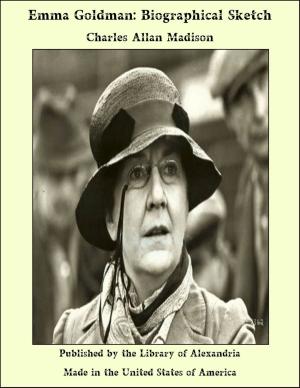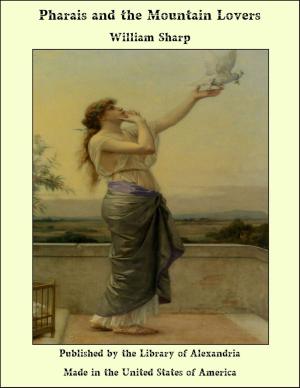Philosophical Transactions on the Magnetizing Power of the More Refrangible Solar Rays and other Biographical Sketches of Mary Fairfax Somerville
Nonfiction, Religion & Spirituality, New Age, History, Fiction & Literature| Author: | Mary Fairfax Somerville | ISBN: | 9781465589033 |
| Publisher: | Library of Alexandria | Publication: | March 8, 2015 |
| Imprint: | Language: | English |
| Author: | Mary Fairfax Somerville |
| ISBN: | 9781465589033 |
| Publisher: | Library of Alexandria |
| Publication: | March 8, 2015 |
| Imprint: | |
| Language: | English |
In the year 1813, Professor Morichini of Rome discovered that steel, exposed to the violet rays of the solar spectrum, becomes magnetic. His experiments were repeated by Professor Configliachi at Pavia, and also by Mons. Berard, at Montpellier, without success. I am not aware of any one having attempted them in this country, perhaps from the belief that experiments which had sometimes failed in Italy, were not likely to succeed in our more northern climate. The unusual clearness of the weather last summer, however, induced me to try what could be accomplished in this country. Accordingly, in the month of July, an equiangular prism of flint glass, the three sides of which were each 1,4 by 1,1 inches, was fixed in a slit made to receive it in a window-shutter: by this prism a coloured spectrum was thrown on an opposite panel, at the distance of about five feet. I used for the subject of experiment, a very slender sewing needle an inch long, having previously ascertained that it was quite free from magnetism, by repeated exposure of both ends of it to the north and south pole of a very sensible magnetic needle, when it was found equally to attract either pole in every instance. The magnetic needle employed as a test in this experiment, is made of a sewing needle magnetised, and run through a small piece of cork, into which a conical cap of glass is inserted; the whole traverses on the point of a needle fixed perpendicularly in a stand. I had no information at this time of the manner in which Professor Morichini had conducted his experiments; but it occurred to me that it was not likely that if the whole of the needle were equally exposed to the violet rays, the same influence should, at the same time, produce a south pole at one end of it, and a north pole at the other. I therefore covered half of the needle with paper, and fixed it to the panel with wax, between ten and eleven in the morning, in such a position that the uncovered part of it should be exposed to the violet rays. The needle was placed in a vertical plane, nearly perpendicular to the magnetic meridian, and inclined to the horizon. As I had not a heliostat, it was necessary to move the needle in a direction parallel to itself, to keep the exposed portion of it constantly in the violet ray. The sun was bright at the time, and in less than two hours I had the gratification to find that the end of the needle which had been exposed to the violet rays attracted the south pole of the magnetic needle, and repelled the north pole. It had been previously ascertained that there was no iron near to disturb the results. The experiment was also repeated on the same day, under precisely similar circumstances, with the view of detecting any source of error that might have escaped observation in a first attempt; but the result was the same as in the first.
In the year 1813, Professor Morichini of Rome discovered that steel, exposed to the violet rays of the solar spectrum, becomes magnetic. His experiments were repeated by Professor Configliachi at Pavia, and also by Mons. Berard, at Montpellier, without success. I am not aware of any one having attempted them in this country, perhaps from the belief that experiments which had sometimes failed in Italy, were not likely to succeed in our more northern climate. The unusual clearness of the weather last summer, however, induced me to try what could be accomplished in this country. Accordingly, in the month of July, an equiangular prism of flint glass, the three sides of which were each 1,4 by 1,1 inches, was fixed in a slit made to receive it in a window-shutter: by this prism a coloured spectrum was thrown on an opposite panel, at the distance of about five feet. I used for the subject of experiment, a very slender sewing needle an inch long, having previously ascertained that it was quite free from magnetism, by repeated exposure of both ends of it to the north and south pole of a very sensible magnetic needle, when it was found equally to attract either pole in every instance. The magnetic needle employed as a test in this experiment, is made of a sewing needle magnetised, and run through a small piece of cork, into which a conical cap of glass is inserted; the whole traverses on the point of a needle fixed perpendicularly in a stand. I had no information at this time of the manner in which Professor Morichini had conducted his experiments; but it occurred to me that it was not likely that if the whole of the needle were equally exposed to the violet rays, the same influence should, at the same time, produce a south pole at one end of it, and a north pole at the other. I therefore covered half of the needle with paper, and fixed it to the panel with wax, between ten and eleven in the morning, in such a position that the uncovered part of it should be exposed to the violet rays. The needle was placed in a vertical plane, nearly perpendicular to the magnetic meridian, and inclined to the horizon. As I had not a heliostat, it was necessary to move the needle in a direction parallel to itself, to keep the exposed portion of it constantly in the violet ray. The sun was bright at the time, and in less than two hours I had the gratification to find that the end of the needle which had been exposed to the violet rays attracted the south pole of the magnetic needle, and repelled the north pole. It had been previously ascertained that there was no iron near to disturb the results. The experiment was also repeated on the same day, under precisely similar circumstances, with the view of detecting any source of error that might have escaped observation in a first attempt; but the result was the same as in the first.
